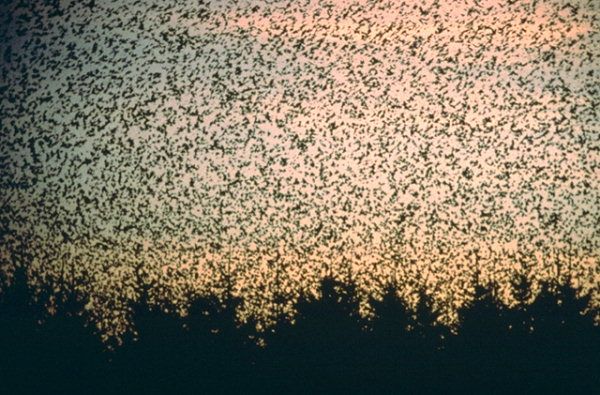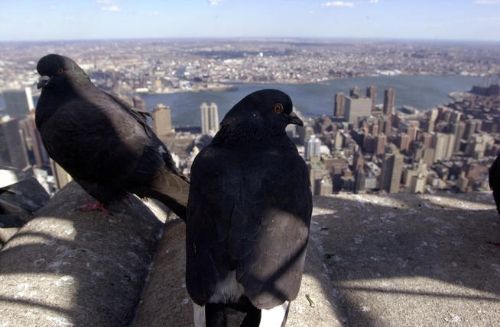
Thousands of European Starlings have been invading a Johnson City, TN neighborhood for many years, and the homeowners on East Holston Avenue have had it with the noise and the mess. Bird droppings rain down incessantly on cars, homes and sidewalks, which is not only unsightly but a health concern. In the winter, these bird pests travel in flocks and invade cities to get warm.
Some residents have resorted to firearms to scare birds away, but many admit it’s only a temporary solution, as the birds always come back. Experts say, starlings prefer dark, quiet places to sleep, so harassing the birds with bright lights/noises and bird distress recordings may offer relief. These tactics must be maintained for about five days to get rid of birds in any one area. Thinning out trees also helps. Here are two effective bird control measures the experts at Bird-B-Gone recommend:
Sonic Shield™--the Sound Solution to Pest Birds
The Bird-B-Gone Sonic Shield™ employs sight and sound to scare birds away from all areas of a yard and trees. It features two operating modes: a daytime mode, which combines flashing LED lights and loud barking dog sounds to scare birds; and a nighttime mode, which uses only the bright flashing LED lights. The latter mode is ideal for most areas where barking dog sounds would wake neighbors at night. Entirely portable and self-contained, the Sonic Shield™ is simple to set up wherever birds gather and roost. The device uses just four standard AA batteries, so there’s no need to run long AC cords to power it. The Sonic Shield™ can easily be mounted to a light fixture, over a door, in a tree, or on the roof. It’s ruggedly designed for outdoor use.
Bird Chase Super Sonic Scares Birds from Yards
A highly effective sound bird deterrent, the Bird Chase Super Sonic by Bird-B-Gone fully exploits a bird’s sensitive hearing and natural fear of predators. It broadcasts pre-recorded distress and predator calls for over 22 species of birds—including starlings, pigeons, crows, gulls, and grackles. You can set it to deter a specific species of bird or switch it to a "general" setting to deter multiple bird species. The device repeats the distress and predator calls every 10 minutes to keep pest birds away. It features a volume control that lets you vary the sound output—from 65-105 decibels. The sounds resemble normal bird calls to the human ear, so they won’t bother your pets or neighbors. And unlike ultrasonic devices, which emit sounds above the hearing range of most birds, the Bird Chase Super Sonic generates sounds birds can actually hear. The device is powerful enough to protect a full acre of property, so it’s ideal for most homeowners. It’s also ruggedly designed for outdoor use.

